“We have gone through an explosion in the number of breweries in operation in London, we’ve seen an explosion in the number of brands, an explosion in the level of innovation and an explosion in the number of packaging formats. And all of that has happened in the last four or five years. I believe we have seen more happen in that period than we have in a generation. That is incredibly interesting for the consumer, but the challenge lies with the breweries to keep up,” explains Duncan Sambrook, founder of Battersea-based Sambrook’s. It’s a glorious September morning and things are hotting up in the South London brewery, both literally and figuratively.
“We are clearly seeing a boom in the amount of breweries opening in London, and further afield, but I don’t know whether all of these will be successful. Of course there have been success stories, and there will continue to be, but time ultimately will tell,” he adds. “Regardless, there are lots of exciting things happening in this industry so it continues to be a fascinating sector to be part of. Consumers are more demanding of choice and innovation than ever, so that’s our job to keep up.”
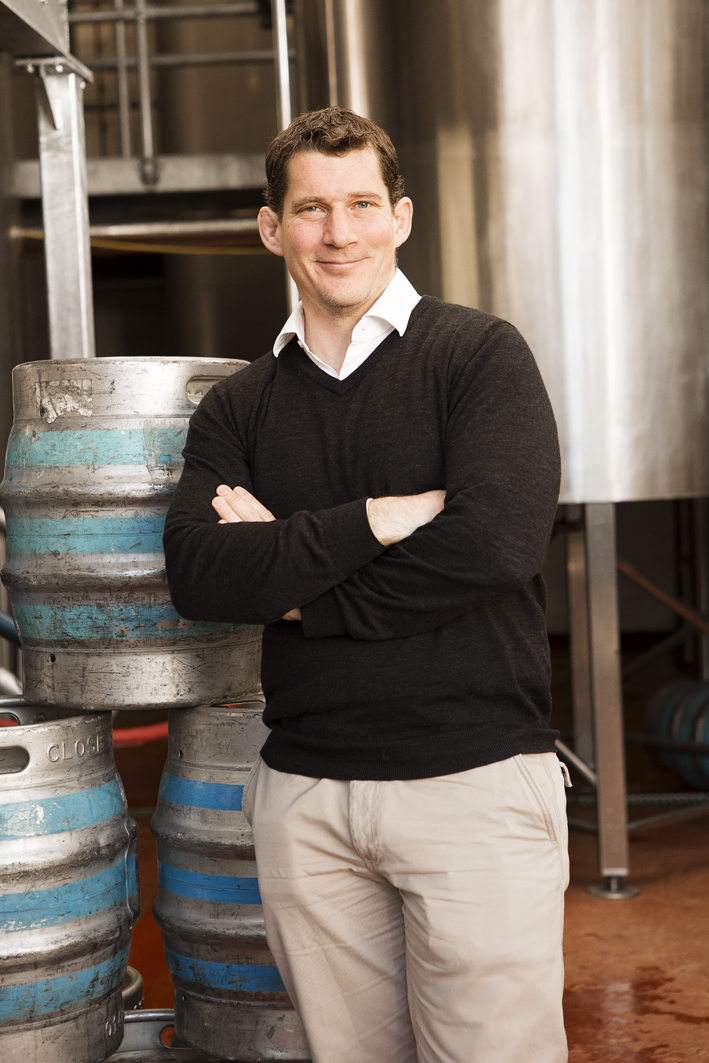
Sambrook’s is eight years young in 2016, yet there are the best part of a hundred more breweries in operation than there were ten years ago, when the first seeds of the this brewery were sown.
Alongside a group of friends back in August 2006, Sambrook attended the Great British Beer Festival in London, then held at Earls Court. “If I’m in Wales, I will always look out for Welsh beers, or if I’m Cornwall, I’ll want a Cornish beer, so to find Fuller’s as the only representative of London brewing at a London beer festival was odd. So that’s where it all started for me,” he explains.
In those formative years after that visit, an accountancy career in the City at Deloitte came calling. But studying brewing and creating a business plan kept his passion for beer alive. In this time, Sambrook managed to pool together the necessary funds to start the business that would become Sambrook’s Brewery. The stars also aligned when he was introduced to David Welsh, the retired former owner of the Hampshire’s Ringwood Brewery. The duo, both with a City career in common, rewrote his business plan and located the London site that houses Sambrook’s today.
Despite the economy being hit by the financial crisis, and major shareholders dropping out as a result, good fortune in the form of loyal university friends and the support of other shareholders ensured that the Sambrook’s journey could truly start before it ended. And with that support in tow, he handed in his notice at Deloitte to start a professional career in brewing in the August 2008. Three months later, the first Sambrook’s beer was being sampled.
Sambrook is honest and considered in his approach. He admits that he can brew beer but won’t call himself a brewer. It’s a good thing then that the brewery in 2016 can continue to call upon the expertise of head brewer Sean Knight. The Cape Town native who, in the words of Sambrook, started his career in Battersea as “the world’s most overqualified cask washer” moved to the UK to look at a career in the oil industry but a recommendation by his brother’s friend to speak to Sambrook’s saw all of that change.
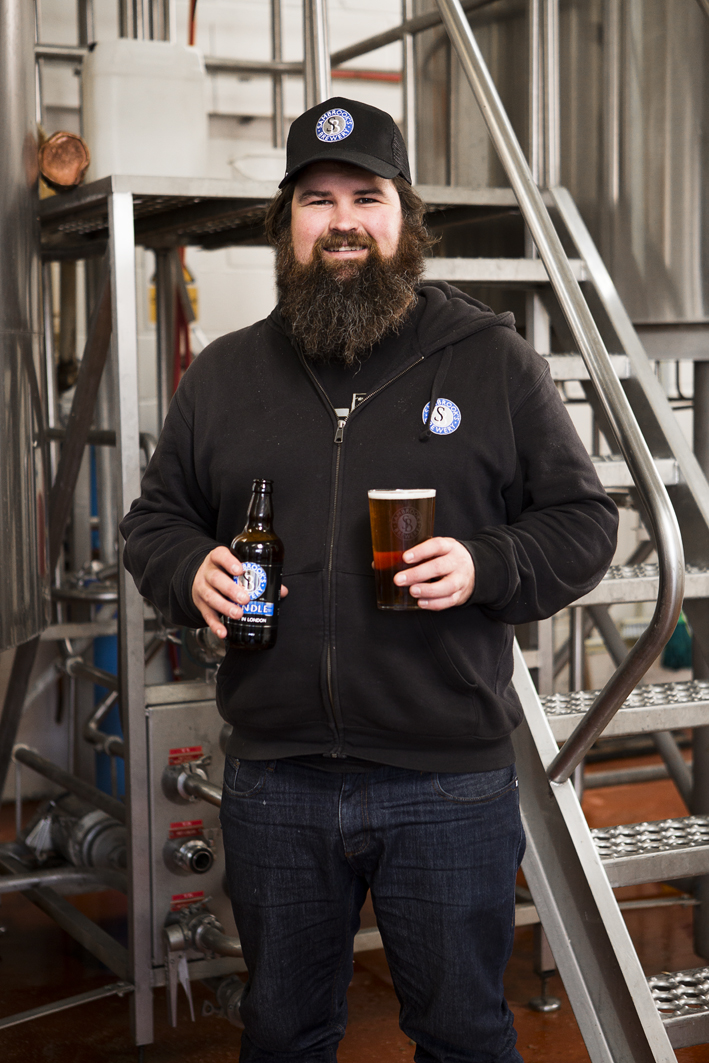
Knight swiftly worked his way up at the brewery and is responsible for the creation of new beer lines such as the brewery’s increasingly-popular ‘Battersea IPA’, a 6.2% beer that contains Maris Otter Pale Ale Malt and Caramalt, with Chinook Hops for bittering and Chinook and Citra Hops for aroma.
Having Knight (right) on board has also resulted in the brewery collaborating with figures such as Jamil Zainasheff, the multi-award winning, internationally renowned home brewer who is also co-founder of California’s Heretic Brewing Company. Something of a chance encounter between Zainasheff and Knight saw the duo forge a friendship and mutual respect that lead to the collaboration earlier this year, the 6.9% ’Buffalo Badger Brown Ale’ an American take on a traditional UK Ale.
Such one-off beers complement the brewery’s core and season ranges. But while the brewery enjoys releasing new beers, it takes the long view before putting something to market.
“I don’t think of ourselves as conservative but people in the marketplace would probably consider us more so than our competitors,” says Sambrook. “To release a new beer, it needs to fulfil many criteria before we release it. Lots of thought goes in to that and we have already started the process of revamping our products for next year. Our cask offering has been the same for around five years, but consumer palettes change so we need to react to that, too. Look at one beer we did, Session. This was trialled in 2015 and was our best selling seasonal, and it was a great success again this year, too. So what we are likely to do is tweak it, bring it in to the core, and maybe drop our Powerhouse Porter to the seasonal range. We look at our portfolio as one. Cask, keg, and bottle. Within that we have the core, the seasonal, and the one-offs.”
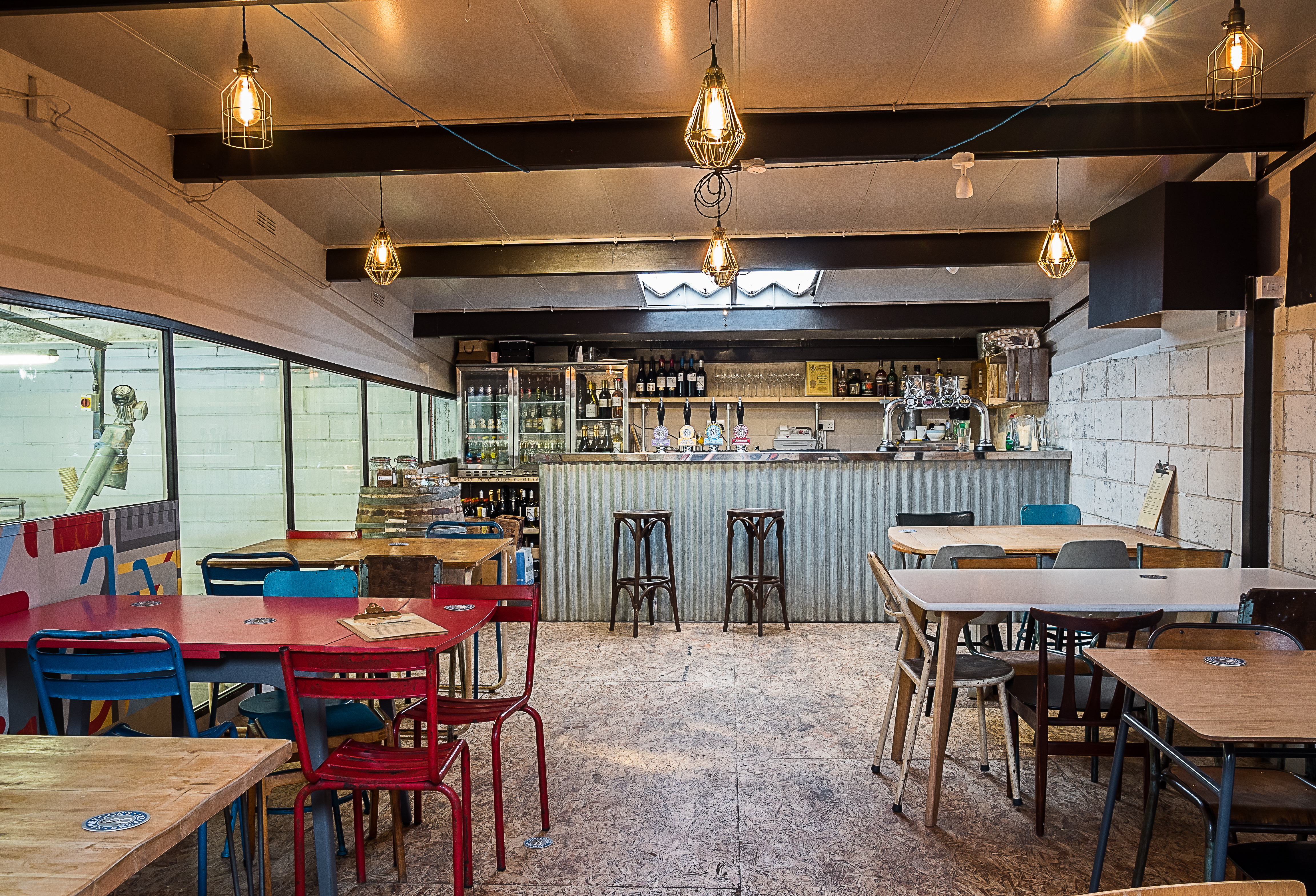
Having this unified approach simplifies the way the brewery to bring its beers market but Sambrook points out that its sales are segregated as two.
“We look at it where we have sales in to the pub landscape and then we have the secondary sales to the consumer. With this, we are talking about tasting events, introductions and takeovers. But the difficult thing at the moment is selling in to pubs,” he explains. “The first thing a pub will often ask is “What is your newest beer?”. People are always looking for something new. However, I was reading the other day that most pubs have around 1,000 customers, but only 10% of these have customers that go in every week.
“So if you imagine you have constantly rotating cask or keg lines and in some cases those beers are not on for more than two or three days, you are only actually touching 5% of that pubs catchment before they come in and have another beer. So we are trying to educate pubs to keep beer on for a month, or six weeks. For one, we will give you a better price but two, it’s better for your customers to see and experience a beer more than once. And that will let you, as a landlord, to make a judgement on that beer’s popularity over a better sample size. Otherwise, you are not being truly representative of the people that come in, drink in your pub, and where their tastes lie.”
Sambrook recalls a recent visit to a pub where its IPA was on tap for £6.50 and in his own words, that pub was “taking the p*ss”. I know what we sell that for, and it should not be in a category where it is sold for that price. People are making a margin at the detriment of the brewery and the customer in that instance.
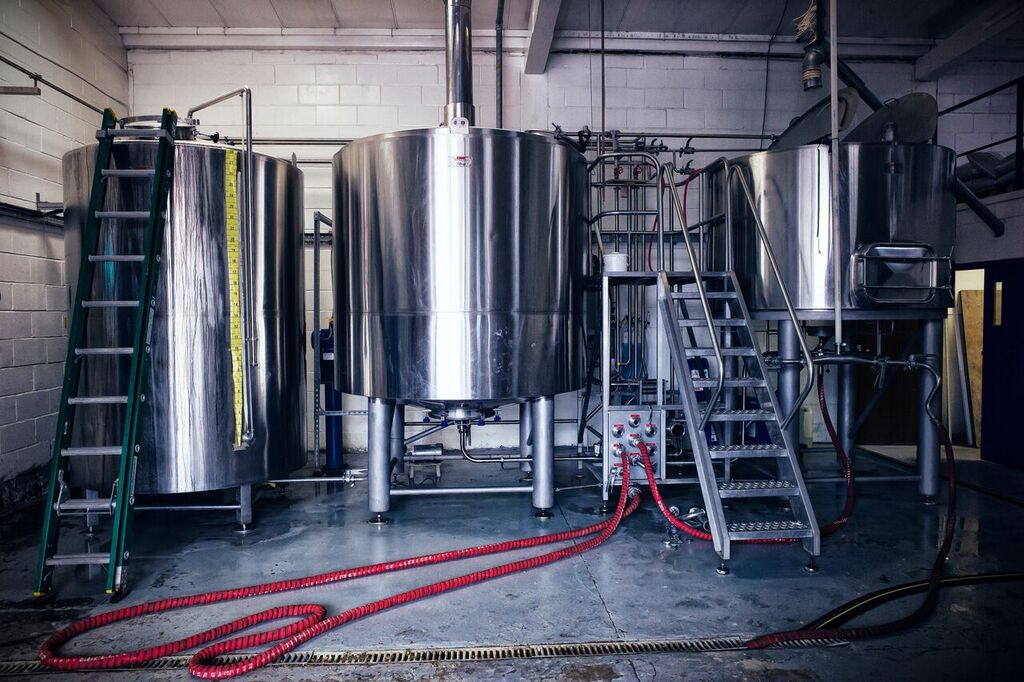
It’ll become a one-off for the consumer in that case as they’re unlikely to return due to the prohibitive cost. However he is much fonder of the relationship his brewery has with the Draft House chain of pubs. Its first pub, the Westbridge in Battersea, being the brewery’s first account.
What is certain though is that the wider London market, and beyond, continues to enjoy the beer Sambrook’s Brewery puts out. It’s 3.8% Pale Ale, Wandle, named after the Thames tributary flowing by the brewery remains success but its newer keg Pale Ale is on course to overtake the former by the end of year. Though Wandle will always hold a special place in Sambrook’s heart.
“We hear from people that hadn’t drunk beer before but have told us that they had tried Wandle and understood beer as a result. I see that, and us, an entry level from where you can go on a journey understanding beer then trying that first Porter, a Double IPA, or a sour, he says. “Then what you tend to do is then value beer more and become aware of its value on different occasions whether it be a special event with a particular beer or a time where you stick on a sessionable beer for an evening.”
While Sambrook’s has enjoyed steady growth, the biggest challenge for London breweries such as this is space.
“You are seeing it everywhere. Look at the pricing of what is happening in London and you get this concentric ring effect where you get sites priced out of the market. If we were forced to move, we would have to stay in London, somehow. That’s what we’ve always called ourselves, a London brewery, so that can’t change.
Sambrook considers the brewery lucky as it has been growing steadily and was also able to take on a new bottling line facility in 2012, which freed up space in London. Sambrook’s brewing operation runs at around 80% capacity, producing on average 15hl of beer a month, though distribution remains a “challenge” from the Battersea facility with the company looking at options for the future.
Its South East Bottling site in Ramsgate is based over 6,500sqft. and consists of tank storage for rough beer, a bottling and packaging hall, and storage facilities for dry goods and finished products.
“One of the biggest problems with premium bottled beer in ranges in supermarkets is that it is no longer becoming premium. That’s part of the reason we’re primarily moving to 330ml bottles. Premium beer in the future, as we are more frequently seeing now, will be 330ml cans and bottles,” he says.
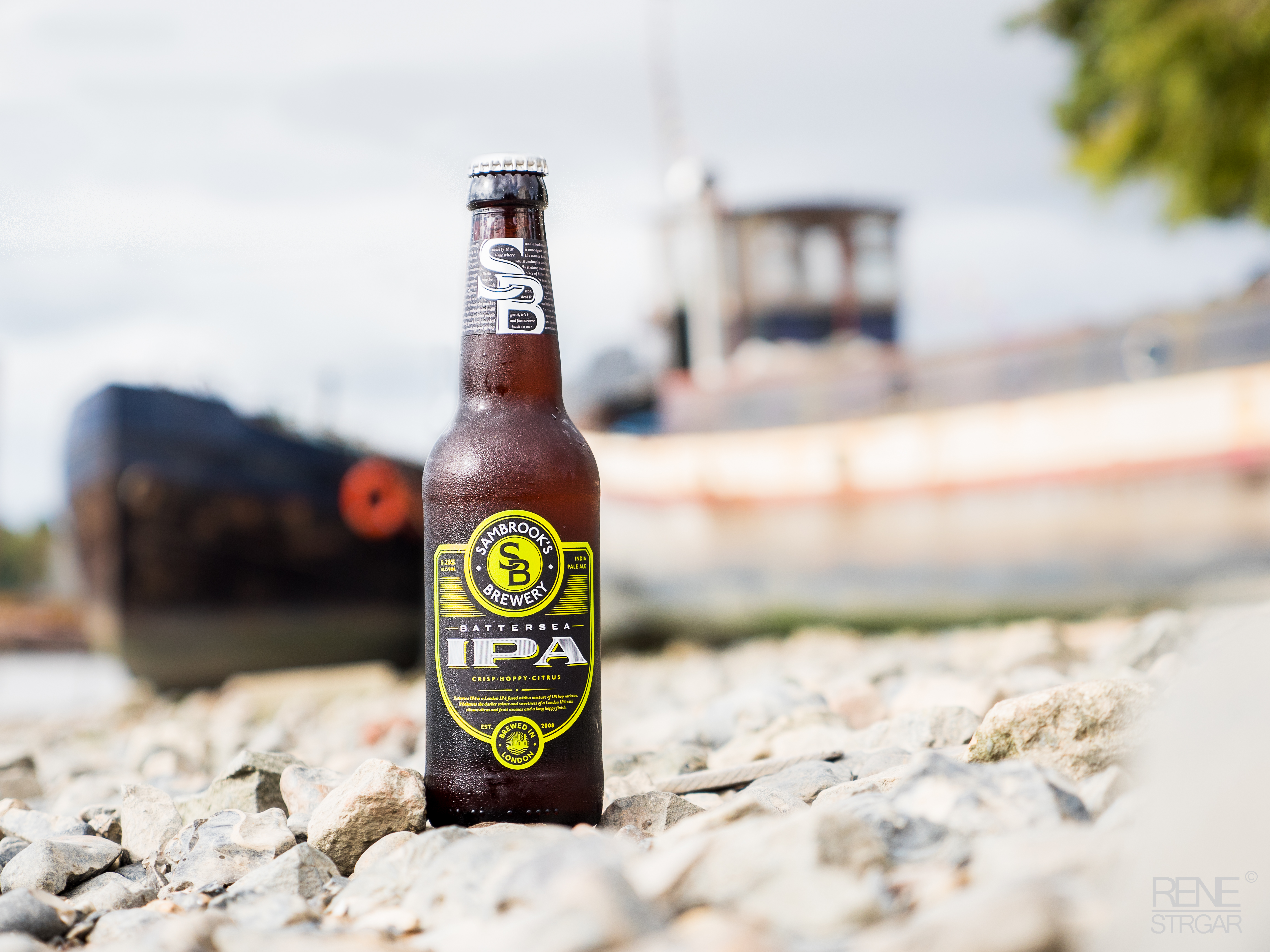
A facility available to other breweries, the standard bottling process at South East Bottling is a five step process that takes seven days from beer intake to bottles ready to dispatch. Each part of the process is carefully managed by their trained technician to ensure minimal losses and maximum product quality and incorporate the requirements of its customers.
“It allows us to focus more on brewing here in London. It’s what we have always done, and want to continue to do,” he concludes.
In Interview | Sambrook’s
“We have gone through an explosion in the number of breweries in operation in London, we’ve seen an explosion in the number of brands, an explosion in the level of innovation and an explosion in the number of packaging formats. And all of that has happened in the last four or five years. I believe we have seen more happen in that period than we have in a generation. That is incredibly interesting for the consumer, but the challenge lies with the breweries to keep up,” explains Duncan Sambrook, founder of Battersea-based Sambrook’s. It’s a glorious September morning and things are hotting up in the South London brewery, both literally and figuratively.
“We are clearly seeing a boom in the amount of breweries opening in London, and further afield, but I don’t know whether all of these will be successful. Of course there have been success stories, and there will continue to be, but time ultimately will tell,” he adds. “Regardless, there are lots of exciting things happening in this industry so it continues to be a fascinating sector to be part of. Consumers are more demanding of choice and innovation than ever, so that’s our job to keep up.”
Sambrook’s is eight years young in 2016, yet there are the best part of a hundred more breweries in operation than there were ten years ago, when the first seeds of the this brewery were sown.
Alongside a group of friends back in August 2006, Sambrook attended the Great British Beer Festival in London, then held at Earls Court. “If I’m in Wales, I will always look out for Welsh beers, or if I’m Cornwall, I’ll want a Cornish beer, so to find Fuller’s as the only representative of London brewing at a London beer festival was odd. So that’s where it all started for me,” he explains.
In those formative years after that visit, an accountancy career in the City at Deloitte came calling. But studying brewing and creating a business plan kept his passion for beer alive. In this time, Sambrook managed to pool together the necessary funds to start the business that would become Sambrook’s Brewery. The stars also aligned when he was introduced to David Welsh, the retired former owner of the Hampshire’s Ringwood Brewery. The duo, both with a City career in common, rewrote his business plan and located the London site that houses Sambrook’s today.
Despite the economy being hit by the financial crisis, and major shareholders dropping out as a result, good fortune in the form of loyal university friends and the support of other shareholders ensured that the Sambrook’s journey could truly start before it ended. And with that support in tow, he handed in his notice at Deloitte to start a professional career in brewing in the August 2008. Three months later, the first Sambrook’s beer was being sampled.
Sambrook is honest and considered in his approach. He admits that he can brew beer but won’t call himself a brewer. It’s a good thing then that the brewery in 2016 can continue to call upon the expertise of head brewer Sean Knight. The Cape Town native who, in the words of Sambrook, started his career in Battersea as “the world’s most overqualified cask washer” moved to the UK to look at a career in the oil industry but a recommendation by his brother’s friend to speak to Sambrook’s saw all of that change.
Knight swiftly worked his way up at the brewery and is responsible for the creation of new beer lines such as the brewery’s increasingly-popular ‘Battersea IPA’, a 6.2% beer that contains Maris Otter Pale Ale Malt and Caramalt, with Chinook Hops for bittering and Chinook and Citra Hops for aroma.
Having Knight (right) on board has also resulted in the brewery collaborating with figures such as Jamil Zainasheff, the multi-award winning, internationally renowned home brewer who is also co-founder of California’s Heretic Brewing Company. Something of a chance encounter between Zainasheff and Knight saw the duo forge a friendship and mutual respect that lead to the collaboration earlier this year, the 6.9% ’Buffalo Badger Brown Ale’ an American take on a traditional UK Ale.
Such one-off beers complement the brewery’s core and season ranges. But while the brewery enjoys releasing new beers, it takes the long view before putting something to market.
“I don’t think of ourselves as conservative but people in the marketplace would probably consider us more so than our competitors,” says Sambrook. “To release a new beer, it needs to fulfil many criteria before we release it. Lots of thought goes in to that and we have already started the process of revamping our products for next year. Our cask offering has been the same for around five years, but consumer palettes change so we need to react to that, too. Look at one beer we did, Session. This was trialled in 2015 and was our best selling seasonal, and it was a great success again this year, too. So what we are likely to do is tweak it, bring it in to the core, and maybe drop our Powerhouse Porter to the seasonal range. We look at our portfolio as one. Cask, keg, and bottle. Within that we have the core, the seasonal, and the one-offs.”
Having this unified approach simplifies the way the brewery to bring its beers market but Sambrook points out that its sales are segregated as two.
“We look at it where we have sales in to the pub landscape and then we have the secondary sales to the consumer. With this, we are talking about tasting events, introductions and takeovers. But the difficult thing at the moment is selling in to pubs,” he explains. “The first thing a pub will often ask is “What is your newest beer?”. People are always looking for something new. However, I was reading the other day that most pubs have around 1,000 customers, but only 10% of these have customers that go in every week.
“So if you imagine you have constantly rotating cask or keg lines and in some cases those beers are not on for more than two or three days, you are only actually touching 5% of that pubs catchment before they come in and have another beer. So we are trying to educate pubs to keep beer on for a month, or six weeks. For one, we will give you a better price but two, it’s better for your customers to see and experience a beer more than once. And that will let you, as a landlord, to make a judgement on that beer’s popularity over a better sample size. Otherwise, you are not being truly representative of the people that come in, drink in your pub, and where their tastes lie.”
Sambrook recalls a recent visit to a pub where its IPA was on tap for £6.50 and in his own words, that pub was “taking the p*ss”. I know what we sell that for, and it should not be in a category where it is sold for that price. People are making a margin at the detriment of the brewery and the customer in that instance.
It’ll become a one-off for the consumer in that case as they’re unlikely to return due to the prohibitive cost. However he is much fonder of the relationship his brewery has with the Draft House chain of pubs. Its first pub, the Westbridge in Battersea, being the brewery’s first account.
What is certain though is that the wider London market, and beyond, continues to enjoy the beer Sambrook’s Brewery puts out. It’s 3.8% Pale Ale, Wandle, named after the Thames tributary flowing by the brewery remains success but its newer keg Pale Ale is on course to overtake the former by the end of year. Though Wandle will always hold a special place in Sambrook’s heart.
“We hear from people that hadn’t drunk beer before but have told us that they had tried Wandle and understood beer as a result. I see that, and us, an entry level from where you can go on a journey understanding beer then trying that first Porter, a Double IPA, or a sour, he says. “Then what you tend to do is then value beer more and become aware of its value on different occasions whether it be a special event with a particular beer or a time where you stick on a sessionable beer for an evening.”
While Sambrook’s has enjoyed steady growth, the biggest challenge for London breweries such as this is space.
“You are seeing it everywhere. Look at the pricing of what is happening in London and you get this concentric ring effect where you get sites priced out of the market. If we were forced to move, we would have to stay in London, somehow. That’s what we’ve always called ourselves, a London brewery, so that can’t change.
Sambrook considers the brewery lucky as it has been growing steadily and was also able to take on a new bottling line facility in 2012, which freed up space in London. Sambrook’s brewing operation runs at around 80% capacity, producing on average 15hl of beer a month, though distribution remains a “challenge” from the Battersea facility with the company looking at options for the future.
Its South East Bottling site in Ramsgate is based over 6,500sqft. and consists of tank storage for rough beer, a bottling and packaging hall, and storage facilities for dry goods and finished products.
“One of the biggest problems with premium bottled beer in ranges in supermarkets is that it is no longer becoming premium. That’s part of the reason we’re primarily moving to 330ml bottles. Premium beer in the future, as we are more frequently seeing now, will be 330ml cans and bottles,” he says.
A facility available to other breweries, the standard bottling process at South East Bottling is a five step process that takes seven days from beer intake to bottles ready to dispatch. Each part of the process is carefully managed by their trained technician to ensure minimal losses and maximum product quality and incorporate the requirements of its customers.
“It allows us to focus more on brewing here in London. It’s what we have always done, and want to continue to do,” he concludes.
ARTICLES
Kirkstall to renew “landmark of Yorkshire beer culture”
Hydes brewery to invest millions in its pub estate
Brewer’s Spent Yeast Market Projected to Reach $2.17 billion by 2030 – new research
Burning Sky and St Austell collab
PODCASTS